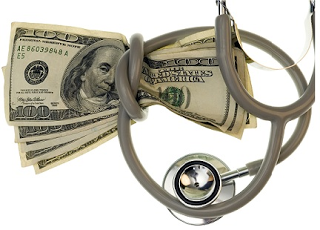 Identifies Six Common Scenarios Account for Millions of Dollars in Overpayments
Identifies Six Common Scenarios Account for Millions of Dollars in Overpayments
Healthcare fraud is not limited to the Medicare and Medicaid population. According to a new analysis of commercial insurance claims data conducted by Truven Health Analytics, six common claims scenarios accounted for nearly a million dollars in overpayments annually for each of the organizations in the study.
The new Payment Integrity Analysis augments previous research conducted by Truven Health Analytics, which found that $125-$175 billion in annual healthcare spending is attributable to fraud and abuse in the publicly-and privately-insured population. This new study analyzed insurance claims data for 11.6 million commercially insured individuals and their dependents at 150 large employers over a period of one year. Researchers then identified six types of fraudulent or wasteful claims that contribute the greatest amount of unnecessary healthcare expenditure each year.
“This analysis of real-world health claims data is critical because it cuts through the rhetoric to shine a spotlight on the specific instances where fraud, waste, and abuse are increasingly visible to us,” said Mike Boswood, Truven Health Analytics president and CEO. “By screening vast volumes of healthcare claims data against best practices and quality guidelines, it is possible to consistently spot anomalies and begin the process of rooting out fraud and abuse at the source.”
Across the organizations in the study, a total of $122.6 million in annual overpayments were found to be attributable to six common examples of wasteful or potentially fraudulent care. Together, these six factors cost each organization in the study $4.93 per member per year (a figure that includes the employee and his/her dependents) in unnecessary payments. Following are the six most costly drivers of healthcare fraud, waste, and abuse from the study:
- Schedule II Drugs without Physician Care ($84.3 million): Over 20 percent of patients that received Drug Enforcement Administration (DEA) Schedule II drugs – such as Vicodin®, Oxycodone, Cocaine, Morphine, and Ritalin – had no associated medical visit 90 days before the receipt of prescription.
- Refills on Schedule II Drugs ($5.2 million): Nearly one percent of patients receiving Schedule II prescriptions received refills despite the fact that refills on Schedule II drugs are prohibited by federal law.
- Multiple New Patient Visits (18.5 million): American Medical Association guidelines stipulate that a physician can bill patients for only one “new patient” visit every three years. But the data revealed that 1.4 percent of visits and 1.3 percent of the cost associated with new patient visits violated that guideline.
- Improper Distribution of Diabetic Supplies ($8 million): Overall, 7.4 percent of patients and 5.1 percent of the costs for diabetic supplies were for patients with no diabetic diagnosis. This represented $3,894,466 of questionable spending in 2010 and has grown to $8 million in just two years.
- Unbundled Psychotherapy/Drug Management Services ($5.3 million): In instances where both psychotherapy and drug management services are provided together, the two should be billed using a code that includes both services. The research shows that 1.8 percent of patients receiving psychotherapy services also had bills on the same day from the same provider for pharmaceutical management services.
- Wasteful Medical Transportation ($1.3 million): Over five percent of patients and 4.6 percent of medical transport costs had no associated medical visit.
“The key to avoiding waste is meticulous attention to payment integrity issues; ensuring that the payment is made accurately for the correct service to the proper provider,” said Jean MacQuarrie, Vice President of Payment Integrity Solutions at Truven Health Analytics. “Many leading health systems have recognized the root causes of waste and inefficiency, and have pursued their own successful solutions to improve patient care; this same approach needs to carry over to the commercial health plan market to ensure that payers are not unwittingly supporting fraud.”
To read the complete study, click here.
